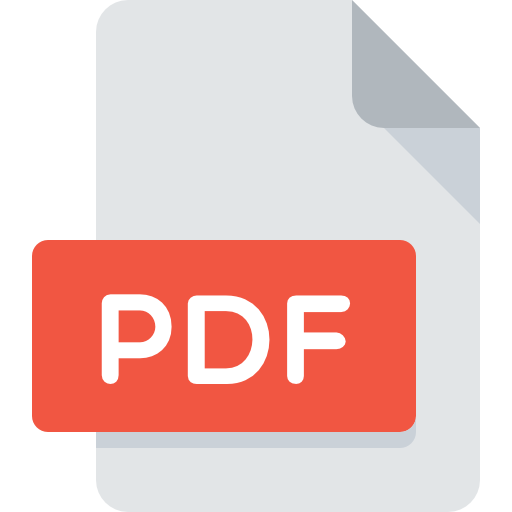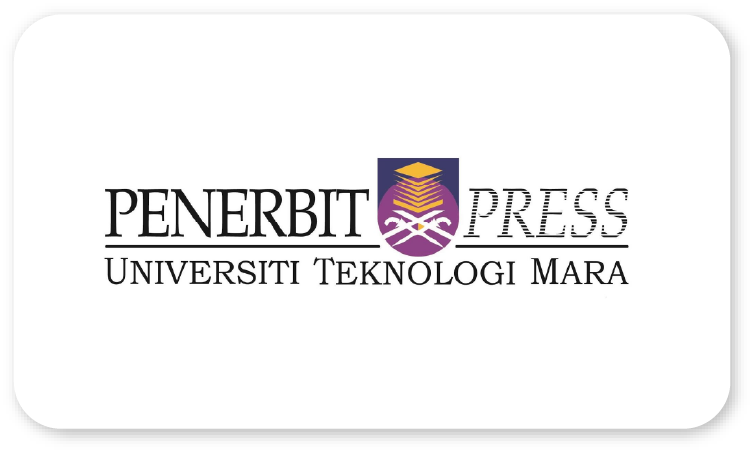
Behavioural influence of TikTok’s algorithm recommendations on users’ engagement and users’ self-persuasion
Siti Khadijah Amir Hamzah
Faculty of Communication and Media Studies, Universiti Teknologi Mara (UiTM) Shah Alam, Malaysia
Ahlam Abdul Aziz
Faculty of Communication and Media Studies, Universiti Teknologi Mara (UiTM) Shah Alam, Malaysia
Shazleen Mohamed
Faculty of Communication and Media Studies, Universiti Teknologi Mara (UiTM) Shah Alam, Malaysia
Abstract
This study examines how TikTok's algorithm influences user behaviour, particularly in user engagement and self-persuasion. The algorithm recommends content based on user interactions, but its opaque nature complicates understanding of how it prioritizes content and potential biases. These biases can reinforce specific behaviours and viewpoints, create echo chambers, and influence users' self-perception. By focusing on maximizing engagement, the algorithm can also promote addictive behaviours, impact mental health, shorten attention spans, and disrupt daily activities. The research aims to achieve the following objectives: (1) identify the level of behavioural influence exerted by TikTok's algorithm on users, (2) examine the level of users' engagement in response to TikTok algorithm recommendations among users, (3) identify level of users' self-persuasion influenced by the algorithm, (4) identify the relationship between behavioural influence and users' engagement, and (5) identify the relationship between behavioural influence and users' self-persuasion. Using quantitative methods and stratified sampling, this study analyses data from 385 Millennial and Generation Z TikTok users in the Klang Valley, Malaysia. An online survey conducted via Google Forms captures users' experiences and perceptions regarding TikTok's algorithm. Overall, the findings conclude that TikTok is a persuasive platform, as the results reveal a significant relationship between behavioural influence and both user engagement and self-persuasion. This study highlights the substantial impact of TikTok's algorithm on user behaviour, offering valuable insights for social media managers. However, a primary limitation is the short timeframe, which resulted in data collection from only 203 respondents
Keywords:TikTok, Algorithm, Engagement, Self-persuasion, For Your Page
References:
Abbasi, A. Z., Ayaz, N., Kanwal, S., Albashrawi, M., & Khair, N. (2023). TikTok app usage behavior: the role of hedonic consumption experiences. Data Technologies and Applications, 57(3), 344–365.
Alekhin, V. K. (2021). Basic principles of TikTok algorithms. Век Информации (Сетевое Издание), 5(2(15)), 61–76.
Arli, D., Badejo, A., Carlini, J., France, C., Jebarajakirthy, C., Knox, K., Pentecost, R., Perkins, H., Thaichon, P., Sarker, T., &
Wright, O. (2020). Predicting intention to recycle on the basis of the theory of planned behaviour. International Journal of Nonprofit and Voluntary Sector Marketing, 25(2).
Aulia, N. (2023). Strategi Dakwah Kadam Sidik Melalui Media TikTok. https://doi.org/10.31219/osf.io/92pqn
Backlinko Team. (2024). TikTok Statistics You Need to Know. Backlinko .
Boeker, M., & Urman, A. (2022). An Empirical Investigation of Personalization Factors on TikTok.
Bouillon, L., Schouten, D., & Campos, F. (2023). Designing the User Experience to Achieve Better Engagement and Feedback on TikTok Accounts (pp. 503–515).
Cai, Y. (2023). The Influence of TikTok on the Establishment of Adolescent Self-esteem. BCP Education & Psychology, 8, 107–111.
Chen, X. (2024) Investigation on the Self-Improving Algorithm of TikTok Based on Extensive User Interactions. Proceeding, EMITI 2024- International Conference on Engineering Management, Information Technology and Intelligence
Chen, Z., & Shi, C. (2022). Analysis of Algorithm Recommendation Mechanism of TikTok. International Journal of Education and Humanities, 4(1), 12–14.
Firth, E. (2025). TikTok as television. Navigating algorithmic entertainment in the platform era.
Gesmundo, M. A. G., Jordan, M. D. S., Meridor, W. H. D., Muyot, D. V., Castano, M. C. N., & Bandojo, A. J. P. (2022). TikTok as a Platform for Marketing Campaigns: The effect of Brand Awareness and Brand Recall on the Purchase Intentions of Millennials. Journal of Business and Management Studies, 4(2), 343–361.
Gilmore, R., Beezhold, J., Selwyn, V., Howard, R., Bartolome, I., & Henderson, N. (2022). Is TikTok increasing the number of self-diagnoses of ADHD in young people? European Psychiatry, 65(S1), S571–S571
Githaiga, J. W. (2024). The Use of TikTok for Consumer Engagement by Select Beverage Companies in Nairobi (Doctoral dissertation, St. Paul's University).
Grass, R. H., & Seiter, J. S. (2022). Persuasion: Social influence and compliance gaining. Routledge.
Habes, M., Tahat, K., Tahat, D., Attar, R. W., Mansoori, A., & Ketbi, N. (2023, June). The theory of planned behavior regarding artificial intelligence in recommendations and selection of YouTube news content. In 2023 International Conference on Multimedia Computing, Networking and Applications (MCNA) (pp. 42-47). IEEE.
Hagger, M. S., Cameron, L. D., Hamilton, K., Hankonen, N., & Lintunen, T. (2020). The Handbook of Behaviour Change (1st ed., Vol. 1). Cambridge University Press.
Handayani, E. A., Silwanus, M. H., Gardhini, M., Vivaldy, R., Hidayat, R., Muliyono, Y. S., & Arifiah, A. (2022). The TikTok Users Perception Relates to the Influencer’s Communication Privacy Management. International Journal of Research and Review, 9(7), 741–746.
Haq, M. D. U., & Chiu, C. M. (2024). Boosting online user engagement with short video endorsement content on TikTok via the image transfer mechanism. Electronic Commerce Research and Applications, 64, 101379.
Ionescu, C. G., & Licu, M. (2023). Are TikTok Algorithms Influencing Users’ Self-Perceived Identities and Personal Values? A Mini Review. Social Sciences, 12(8), 465. https://doi.org/10.3390/socsci12080465
Kang, H., & Lou, C. (2022). AI agency vs. human agency: understanding human–AI interactions on TikTok and their implications for user engagement. Journal of Computer-Mediated Communication, 27(5). https://doi.org/10.1093/jcmc/zmac014
Karizat, N., Delmonaco, D., Eslami, M., & Andalibi, N. (2021). Algorithmic Folk Theories and Identity: How TikTok Users Co-Produce Knowledge of Identity and Engage in Algorithmic Resistance. Proceedings of the ACM on Human-Computer Interaction, 5(CSCW2).
Kaye, D. B. V., Zeng, J., & Wikstrom, P. (2022). TikTok: Creativity and culture in short video. John Wiley & Sons.
Kemp, S. (2024). Digital 2024: Global Overview Report — DataReportal – Global Digital Insights. https://datareportal.com/reports/digital-2024-global-overview-report
Klug, D., Qin, Y., Evans, M., & Kaufman, G. (2021). Trick and Please. A Mixed-Method Study on User Assumptions about the TikTok Algorithm. ACM International Conference Proceeding Series, 84–92.
Koc, B. (2023). The role of user interactions in social media on recommendation algorithms: Evaluation of TikTok’s personalization practices from users’ perspective [Istanbul University]. Istanbul University.
Larbi, B., Elouali, N., & Mahammed, N. (2023). Towards Identifying Concepts in Persuasive Social Networks: Case Study TikTok
Lee, A. Y., Mieczkowski, H., Ellison, N. B., & Hancock, J. T. (2022). The algorithmic crystal: Conceptualizing the self through algorithmic personalization on TikTok. Proceedings of the ACM on Human-computer Interaction, 6(CSCW2), 1-22.
Lew, Z. J. (2022). Self-Effects on Social Media: Remembering and Enjoying the Experiences We Share. University of California, Santa Barbara.
Liu, J. (2021). The Influence of the Body Image Presented Through TikTok Trend-Videos and Its Possible Reasons. https://doi.org/10.2991/assehr.k.210609.072
Nugroho, W. N., Alhusna, Y., Tiyara, T., & Thoha, M. (2023). Influence of TikTok Social Media On Student Behavior At MTsN Nurul Huda. International Journal of Education and Teaching Zone, 2(1), 40–50.
Mastantuono, E. (2024). A Study of the Relationship Between the TikTok Algorithm and Content Creators: The Effects of the Digital Machine and Human Interactions (Doctoral dissertation, Concordia University).
Palombo, N. G. (2024). " Sexual Context Collapse” on TikTok: Platform Politics, Content Moderation, and User Agency in Platform Governance.
Pratiwi, E., Anderson, I., & Simaremare, T. P. (2023). Media Sosial Tiktok dan Motivasi Belajar Siswa pada Pelajaran Pendidikan Pancasila dan Kewarganegaraan. Journal of Civic Education, 5(4), 548–556.
Qin, Y., Omar, B., & Musetti, A. (2022). The addiction behavior of short-form video app TikTok: The information quality and system quality perspective. Frontiers in Psychology, 13.
Rahmadani, P. S., Tampubolon, F. C., Jannah, A. N., Hutabarat, N. L. H., & Simarmata, A. M. (2022). Tiktok Social Media Sentiment Analysis Using the Naive Bayes Classifier Algorithm. SinkrOn, 7(3), 995–999.
Rakatiwi, Y., Halwati, U., & Nawawi, N. (2023). FYP Dakwah Digital Creator Milenial Melalui Tiktok di Era 5.0. Al Qalam: Jurnal Ilmiah Keagamaan Dan Kemasyarakatan,
Ramadhani, N., Efni Salam, N., & Eldapi Yozani, R. (2023). Pemanfaatan Konten Tiktok Sebagai Media Komunikasi Pemasaran Digital Shoppe Affiliate Pada Akun Tiktok “Indisyindi.” Pendas : Jurnal Ilmiah Pendidikan Dasar, 8(1), 235–261.
Razali, G., & Yulianti, Y. (2022). The Influence of Digital Communication on TikTok Addictive Behavior on Elementary School. Jurnal Komunikasi Ikatan Sarjana Komunikasi Indonesia, 7(2), 443–449.
Reddy, K. G., & Khan, M. G. M. (2023). Constructing efficient strata boundaries in stratified sampling using survey cost. Heliyon, 9(11), e21407.
Scalvini, M. (2024). Negotiating morality and ethics: the post-Millennial perspective on TikTok. Authorea Preprints.
Shaikh Muzawar, A. (2024). A Study Exploring how TikTok Influences Users' Behavior: in the Context of Uses and Gratification Theory, Social Comparison, and Consumption.
Silitonga, P. D. P., Hasibuan, M., Situmorang, Z., & Purba, D. (2023). Comparison of TikTok User Sentiment Analysis Accuracy with Naïve Bayes and Support Vector Machine. Worse.
Statista. (2023). Malaysia: population by state 2023 | Statista. https://www.statista.com/statistics/1040670/malaysia-population-distribution-by-state/
Tee, W. Y., Teo, S. C., & Liew, T. W. (2023). Exploring the TikTok influences on consumer impulsive purchase behaviour. International Journal of Business and Society, 24(1), 39–55.
Wang, R. (2022). Does Short-form Video Application Shape Your Life? : An Empirical Study of TikTok Usage and Persuasive Behavior Change in China.
Zhang, Y. (2023). Study on the influence of TikTok Use and individual socialization among adolescents. Journal of Education, Humanities and Social Sciences, 9, 204–210.



